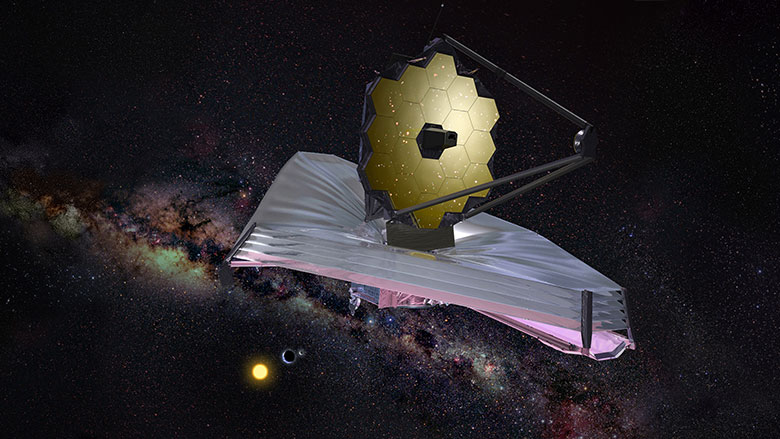The James Webb Space Telescope is back to full science operations. One of the telescope’s instruments, the Near Infrared Imager and Slitless Spectrograph (NIRISS) had been offline since January 15 due to a communications error. But engineers worked through the problem and were able to return the instrument to full operations.
“NASA and CSA [Canadian Space Agency] partnered to approach the problem as technically possible, using a detailed consideration of all areas of operation of the instrument,” said Julie Van Campen, Webb Integrated Science Instrument Module (ISIM) systems engineer at NASA’s Goddard Space Flight Center, in a blog post update.
The instrument, built by CSA, was returned to full operations on January 31. The problem began when a communications delay within the science instrument caused its flight software to time out. Engineers determined the cause of the issue was a hit by a galactic cosmic ray, a form of high-energy radiation from outside our solar system that can sometimes disrupt electrical systems.

Van Campen said encountering cosmic rays is a normal and expected part of operating any spacecraft, and that this cosmic ray event affected logic in the solid-state circuitry of NIRISS electronics known as the Field Programmable Gate Array. JWST engineers determined that rebooting the instrument would bring it back to full functionality.
“They analyzed all possible methods to safely recover the electronics. When performing the operation, reviews were held at each intermediate step,” she said. “We are now happy to report that Webb’s NIRISS instrument is back online, and is performing optimally.”
NIRISS has two capabilities: Wide-Field Slitless Spectroscopy, which involves capturing the overall spectrum of a wide field of view such as a field of stars, part of a nearby galaxy, or many galaxies at once. Its Single-Object Slitless Spectroscopy capabilities involves capturing the spectrum of a single bright object like a star in a field of view.
While JWST has been performing magnificently, this isn’t the first technical issues that engineers have had to deal with. It went into safe mode from December 7-20, 2022 due to a software fault in the telescope’s attitude control system. The telescope’s MIRI (Mid-Infrared Instrument) was also briefly non-operational last September due to increased friction in one of MIRI’s mechanisms in the Medium-Resolution Spectroscopy (MRS) mode. Engineers were able to remotely repair and come up with work-arounds for all issues so far.

